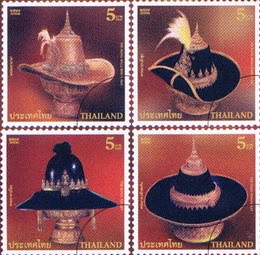Stamp Collecting - More Early Stamp History by Kevin Bauer
The use of adhesive postage stamps began in the early 1840's. Britain was the first country to introduce the postal stamp as a means of paying for letters to be sent through the post office. Soon after this other countries and private organisations began issuing their own postage stamps.
In 1847 Mauritius, a tiny british Colony in the Indian ocean, was next to market with it's adhesive postal stamp. Mauritius issued two Post Office stamps - the first to bear the name of the place of origin. Issued on 21 September of 1847 - these stamps have been held in high regard by stamp collectors ever since. Only 500 of each were printed and less than 40 of the 1000 stamps are known about today.
The stamp printer was given the instruction to base the stamp designs on the Penny Black but to engrave the words 'Post Paid' along the left hand side of the stamp and 'Mauritius' along the right hand side. In error he engraved 'Post Office'
France joined into the postage stamp initiative on the 1st January 1849 with the inscription - Repub.Franc - as identification on their stamps. Belgium joined in in July of 1849 with two stamps featuring a portrait of King Leopold I.
Bavaria - then an independent German kingdom - issued 3 stamps inscribed with 'Bayern and were square - unlike the regular rectangular shape of most stamp designs.
Other contries to issue stamps in the first decade of postage stamps were
* Spain with a crudely ingraved portrait of Queen Isabella II * Australia with a new design idea - the Australian Coat of Arms * The kingdom of Saxony issued a single 3 pfenning stamp inscribed 'Sachsen' * The kingdom of Prussia featuring King Frederick William IV * Local authorities of Schleswig-Holstein with their coat of arms embossed in white relief in the central vignette.
In 1853 the popular stamp collectors choice - Cape of Good Hope were issued. They were triangular in shape -making them quite distinctive. Letters posted with the cape of Good Hope stamp could be easily sorted from the more common rectangular stamp shape.
These early stamps were printed by the direct plate process. Known to collectors as 'line engraving' - this process of printing was a security precaution. It was reasoned that the highly skilled and individual style of engraving a printing dye by hand would make it difficult for the stamp to be illegally copied by fraudsters.
Stamp collectors often compile their stamp collections around some part of history which facinates them. One of the stories from early stamp production is the one of Estonia, Latvia and Lithuania. They produced their first emergency postal stamps as a result of gaining their independence from Russia after the end of the First World War. This independence would last until 1940 when Russia once again invaded and occupied their countries as buffers against the German armed onslaught. Part of being unwilling constituents of Russia resulted in them being forced to use the Russian postage stamps instead of their own.
It is this national approach to stamp creation and production that interests many stamp collectors. Often the first issues of a nations stamps were crude and hastily printed and then as time went on the postal stamps would begin to illustrate national history and culture - becoming increasingly more sophisticated. This development and the stories behind the changes encourags the stamp collector to keep interested.
Of course, some stamp collectors collect stamps because they are pretty, or maybe illustrate a common image - birds or butterflies for example. And then other stamp collectors collect simply for investment -perhaps never even seeing the stamps they own.
Browse » Home »
Stamp Collection
» Stamp Collecting - More Early Stamp History
08 August 2007
Stamp Collecting - More Early Stamp History
Subscribe to:
Post Comments (Atom)
ไปรษณียากรไทย แสมป์ไทย ล่าสุด
แสตมป์ไทย แบบต่าง ๆ
- แสตมป์ 100 ปี พุทธทาส
- แสตมป์กรุงเทพฯ เมืองแฟชั่น
- แสตมป์กล้วยไม้
- แสตมป์การเขียนจดหมาย
- แสตมป์ความร่วมมือไทย - สวีเดน
- แสตมป์ความร่วมมือไทย - อิตาลี
- แสตมป์คุณทองแดง
- แสตมป์งานกาชาด
- แสตมป์ชีวิตใต้ทะเล
- แสตมป์ชุดปีใหม่
- แสตมป์ดอกกุหลาบ
- แสตมป์ที่ระลึก
- แสตมป์ที่ระลึก 100 ปี สยามสมาคมในพระบรมราชูปถัมภ์
- แสตมป์ที่ระลึก 30ปี ความสัมพันธ์ทางการทูตไทย-จีน
- แสตมป์ที่ระลึกงานแสดงตราไปรษณียากรแห่งชาติ
- แสตมป์นักษัตรประจำปี
- แสตมป์พระราชวัง
- แสตมป์พระเครื่อง
- แสตมป์วันพุทธศาสนา
- แสตมป์วันสงกรานต์
- แสตมป์วันสำคัญทางพุทธศาสนา
- แสตมป์วันสื่อสารแห่งชาติ
- แสตมป์วันเด็ก
- แสตมป์อนุรักษ์มรดกไทย
- แสตมป์เรือพระที่นั่ง
แสตมป์ไทย อดีต-ปัจจุบัน
คนคิดแปลก มองมุมต่าง
Copyright © 2009 แสตมป์ไทย | Fresh Themes Gallery | NdyTeeN. All Rights Reserved. Powered by Blogger and Distributed by Blogtemplate4u .


COMMENTS :
0 comments to “Stamp Collecting - More Early Stamp History”
Post a Comment